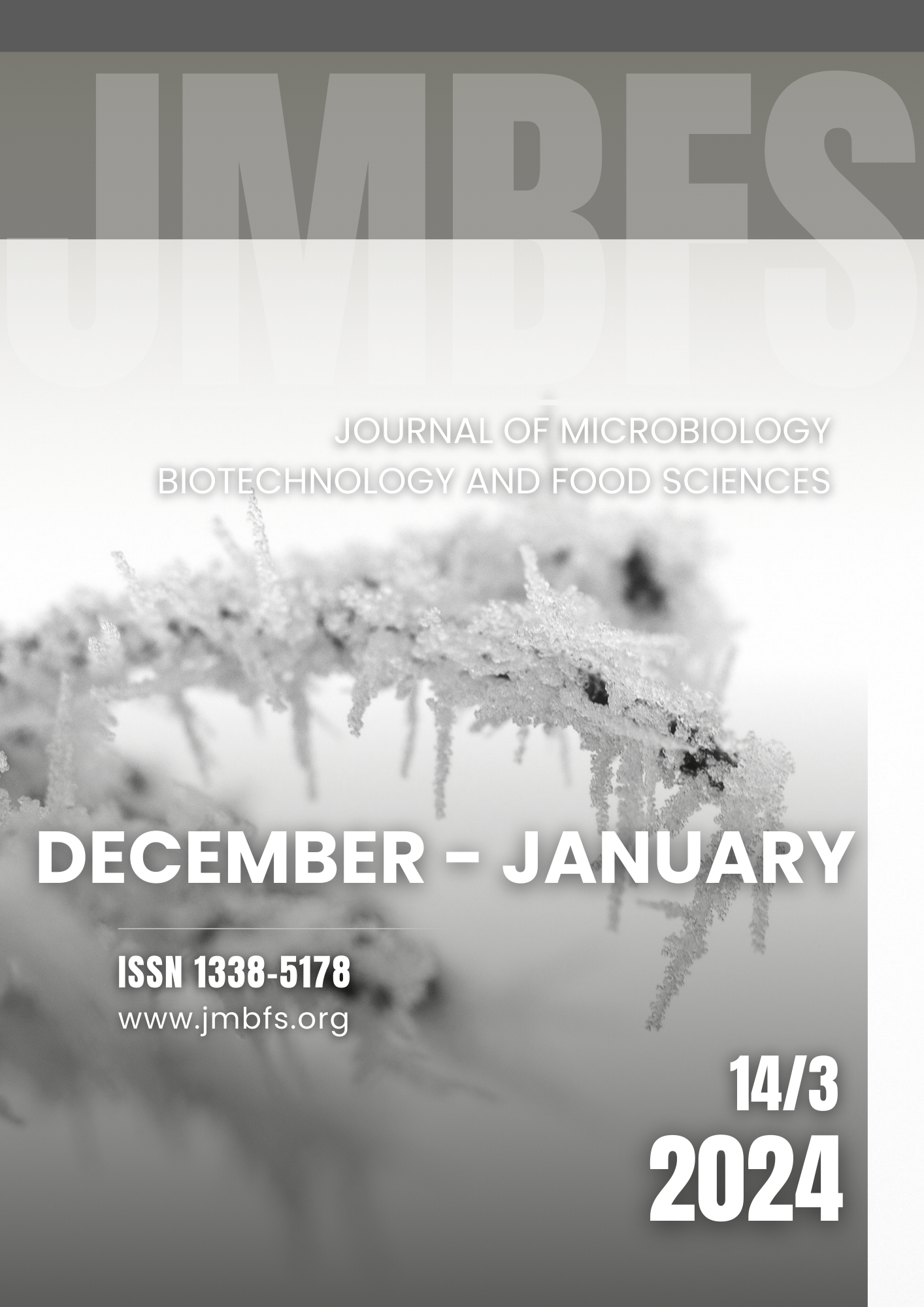EVALUATING THE BIOLOGICAL ACTIVITIES OF SILVER AND ZINC OXIDE NANOPARTICLES BIOSYNTHESIZED BY NEOWESTIELLOPSIS PERSICA A1387
DOI:
https://doi.org/10.55251/jmbfs.10397Keywords:
Neowestiellopsis persica, Cyanobacteria, Fish pathogens, silver nanoparticle, zinc oxide nanoparticleAbstract
In this research, the antimicrobial properties of zinc oxide (ZnO NPs) and silver (AgNPs) nanoparticles, synthesized biologically using Neowestiellopsis persica through various methods (such as wet biomass, boiling biomass, supernatant, extracellular polysaccharides, and phycocyanin), were examined against fish pathogens including Aeromonas hydrophila, Edwardsiella tarda, Yersinia enterocolitica, and Pseudomonas putida. The nanoparticles were successfully created using all methods and characterized employing techniques like UV-visible spectroscopy, scanning electron microscopy (SEM), Fourier transform infrared spectroscopy (FTIR), and dynamic light scattering (DLS). The antibacterial activity of the nanoparticles was assessed using agar-well diffusion assays, while transmission electron microscopy (TEM) was utilized to analyze the ultrastructural interactions between the nanoparticles and the pathogens. Cytotoxicity was evaluated via the trypan blue exclusion method. Notably, nanoparticles generated through the boiling-biomass method demonstrated significantly enhanced characteristics. The analysis revealed two distinct populations of AgNPs measuring 78.82 nm (41.2%) and 91.28 nm (45.5%), along with a pronounced absorption peak at 68.6 nm (80.1%) for ZnO NPs. AgNPs exhibited the strongest growth inhibition against Pseudomonas putida and Edwardsiella tarda, whereas ZnO NPs showed the largest inhibition zone against Yersinia enterocolitica, Pseudomonas aeruginosa, and Aeromonas hydrophila. TEM imagery illustrated the binding of nanoparticles to the outer membranes of Yersinia enterocolitica, compromising their structural integrity. The application of 25 µg/ml of AgNPs and 6.25 µg/ml of ZnO did not lead to significant cell death, but higher concentrations resulted in a dose-dependent cytotoxic effect. Ultimately, the findings of this study confirm that the antibacterial and cytotoxic attributes of silver and zinc oxide nanoparticles, produced through the biosynthesis of Neowestiellopsis persica A1387, can be leveraged to meet future needs in aquaculture.
Downloads
Downloads
Published
How to Cite
Issue
Section
License
Copyright (c) 2023 Omid Sabzevari Joopari, A. E Khajerahimi, R. Kazempoor, Bahareh Nowruzi

This work is licensed under a Creative Commons Attribution 4.0 International License.
All papers published in the Journal of Microbiology, Biotechnology and Food Sciences are published under a CC-BY licence (CC-BY 4.0). Published materials can be shared (copy and redistribute the material in any medium or format) and adapted (remix, transform, and build upon the material for any purpose, even commercially) with specifying the author(s).





